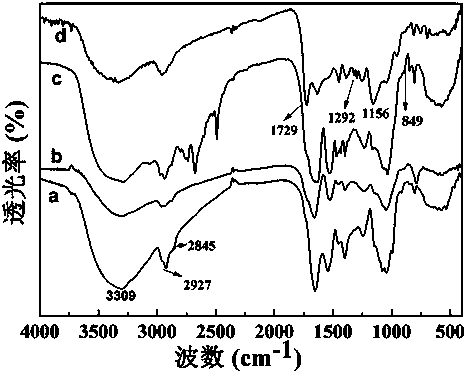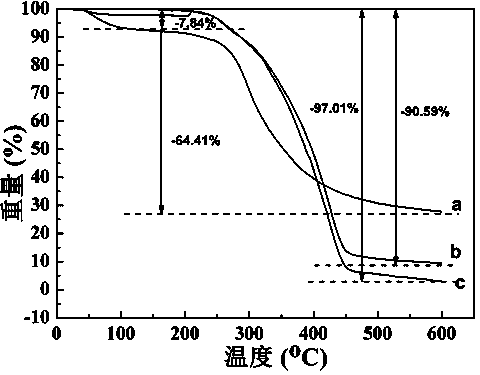Yeast surface atom transfer imprinted adsorbent, and preparation method and application thereof
A technology of imprinted adsorption and atom transfer, which is applied in chemical instruments and methods, adsorption water/sewage treatment, and other chemical processes, can solve problems that have not been reported, and achieve low price, good reproducibility, and good biocompatibility sexual effect
- Summary
- Abstract
- Description
- Claims
- Application Information
AI Technical Summary
Problems solved by technology
Method used
Image
Examples
Embodiment 1
[0025] (1) Preparation of yeast surface-loaded initiator
[0026] Add yeast to a mixture of thionyl chloride and benzene at a volume ratio of 50:10 (mL), wherein yeast and benzene are added at a mass-to-volume ratio of 1 g:10 mL, and react at 70°C After 24 h, wash three times with tetrahydrofuran, dry in vacuum at 25 ℃, take the dried product and disperse it in a mixed solution of tetrahydrofuran and anhydrous triethylamine with a volume ratio of 30:1 (mL). Water triethylamine is 1 g: 1 mL according to the mass and volume ratio, and isobutyryl bromide with a volume ratio of 1:1 (mL) to anhydrous triethylamine is added dropwise after passing nitrogen gas in an ice bath to evacuate oxygen. React at room temperature for 12 h, wash with ethanol three times, and vacuum-dry at 25 °C to obtain the yeast initiator.
[0027] (2) Preparation of yeast surface imprinted adsorbents (MIPs)
[0028]Add the template molecule cephalexin to the mixed solution of methacrylic acid and ethylene...
Embodiment 2
[0032] (1) Preparation of yeast surface-loaded initiator
[0033] Add yeast to a mixture of thionyl chloride and benzene at a volume ratio of 100:10 (mL), wherein yeast and benzene are added at a mass-to-volume ratio of 1.5 g:10 mL, and react at 80 °C 28 h, washed three times with tetrahydrofuran, dried under vacuum at 35 °C, and dispersed the dried product in a mixed solution of tetrahydrofuran and anhydrous triethylamine with a volume ratio of 40:1 (mL), wherein the dried product was mixed with no The water triethylamine is 1.5 g: 1 mL according to the mass and volume ratio, after passing nitrogen and evacuating oxygen in an ice bath , Add isobutyryl bromide with a volume ratio of 2:1 (mL) to anhydrous triethylamine dropwise, react at room temperature for 16 h, wash with ethanol three times, and vacuum-dry at 40 °C to obtain the yeast initiator.
[0034] (2) Preparation of yeast surface imprinted adsorbents (MIPs)
[0035] Add the template molecule cephalexin to the mixed...
PUM
 Login to View More
Login to View More Abstract
Description
Claims
Application Information
 Login to View More
Login to View More - R&D
- Intellectual Property
- Life Sciences
- Materials
- Tech Scout
- Unparalleled Data Quality
- Higher Quality Content
- 60% Fewer Hallucinations
Browse by: Latest US Patents, China's latest patents, Technical Efficacy Thesaurus, Application Domain, Technology Topic, Popular Technical Reports.
© 2025 PatSnap. All rights reserved.Legal|Privacy policy|Modern Slavery Act Transparency Statement|Sitemap|About US| Contact US: help@patsnap.com



